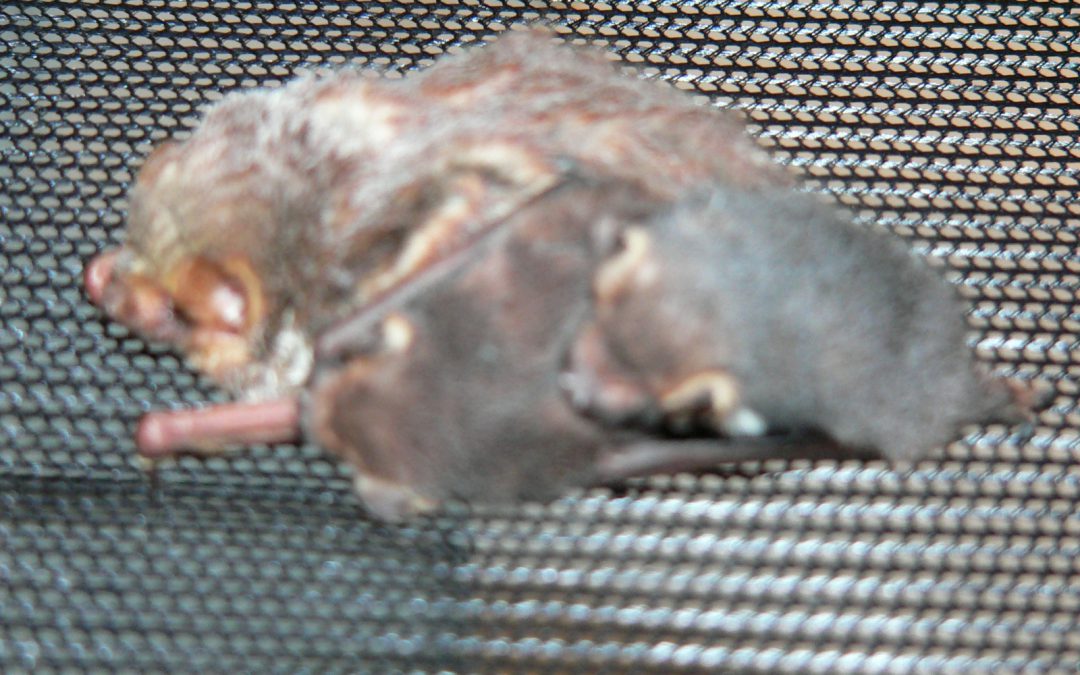
by Carrie Stevenson | Apr 7, 2015
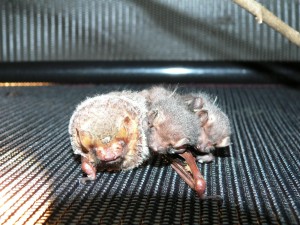
These young Seminole bat pups were separated from their mother and extremely vulnerable in the wild. The local Wildlife Sanctuary nursed them to health. Photo credit: Carrie Stevenson
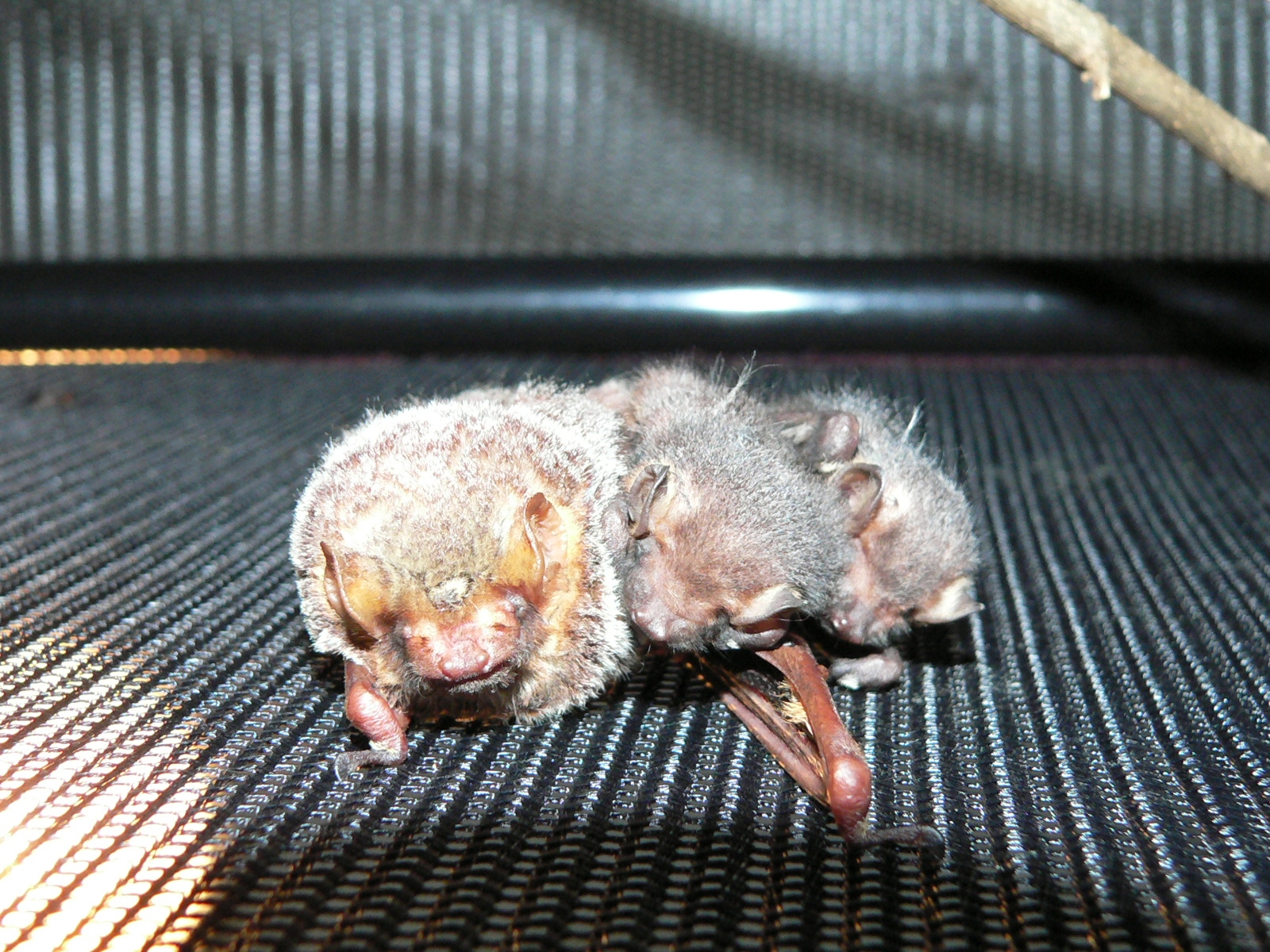 As spring commences and young wildlife of all species are born, everyone’s favorite flying, furry mammal begins roosting season. Ideally, bats will find homes in trees, caves, abandoned buildings, and bat houses, but sometimes they end up in a home. I receive calls often about how to best remove or exclude a group of bats living in an attic or garage. While there are countless benefits (most notably, efficient insect control) to having bats in one’s landscape or neighborhood, most people prefer they not share their own home with them.
As spring commences and young wildlife of all species are born, everyone’s favorite flying, furry mammal begins roosting season. Ideally, bats will find homes in trees, caves, abandoned buildings, and bat houses, but sometimes they end up in a home. I receive calls often about how to best remove or exclude a group of bats living in an attic or garage. While there are countless benefits (most notably, efficient insect control) to having bats in one’s landscape or neighborhood, most people prefer they not share their own home with them.
Bats have a slow reproductive cycle and declining populations in the United States, and are protected by several state laws. According to Florida Administrative Code 68A-9.010 under “Taking Nuisance Wildlife,” it is illegal in Florida to prevent bats from returning to any roosting location from April 16 to August 14. Female bats typically give birth during maternity season to one pup (or rarely, 2-3), which clings to the mother’s fur to nurse for their first few weeks and months of life. Being nocturnal, this means mothers and babies will be inside a dwelling during the day. Typically, if a homeowner is trying to exclude bats from a home, they will put up netting or seal a hole in an attic entry in the evening after bats have flown off to feed on insects at night. However, if this is done during roosting season, young bats left back in the roost while mothers are hunting can get trapped inside a building and will not survive.
This obviously has the potential to cause conflict between homeowners and the bat population. The Florida Fish & Wildlife Conservation Commission has regulatory oversight for bat-related issues, and they will work with citizens to arrange a positive outcome for both the property owner and the animals involved. Bats play an important role the ecosystem as efficient controllers of insect populations.
Unfortunately, bat populations are declining in North America due to a devastating disease called white-nose syndrome and loss of habitat. However, you can help these fascinating animals by installing a bat house in your yard. Keep in mind that bats attracted to bat houses prefer to be in open areas away from trees (where their predators hide), and the house should be installed at least 12 feet in the air. Bat houses can be purchased or built rather simply—keep an eye out for Extension workshops near you, or visit the UF Wildlife Ecology publication, “Effective Bat Houses for Florida” or Bat Conservation International’s website for simple instructions.
To learn more about bats and how to help them, visit this website or contact me or your local County Extension office!

by Julie McConnell | Feb 10, 2015
When talking about pest issues in the landscape, green industry professionals often refer to IPM or Integrated Pest Management.
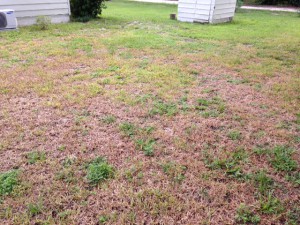
Chinch bug damage to St. Augustinegrass. Photo: Julie McConnell, UF/IFAS
So what is IPM and why should it be used?
IPM is a combination of methods used to manage pests that has the least harmful effect on non-target organisms and the environment. The four categories of IPM are:
-
cultural practices
-
biological control
-
mechanical/physical
-
chemical control
There is not one perfect IPM plan for all landscape situations, but there are some key components to help develop one for any situation.
- Prevent pest problems – choose the Right Plant for the Right Place! Proper planting technique, choosing resistant cultivars, and good maintenance all contribute to overall health and can influence how likely plants are to survive disease, insect, or weed invasions.
- Scout for pests/damage – understand what pests are likely to target common landscape plants. For example, St. Augustinegrass is susceptible to attack by chinch bugs; know what to look for to spot an infestation early.
- Accurately identify the pest – it’s okay to ask for help with this! Your county extension office is a great place to start for both identification and control recommendations. Many times treatments are applied for the wrong pest and that is a waste of your time and money and it can make it harder to get a correct diagnosis.
- Follow control action guidelines – have a plan in place for threshold tolerance. How many pests/amount of damage is okay before

Chinch bug nymph. Photo: Julie McConnell, UF/IFAS
action is taken? What action will you take? Use least toxic methods first and combine the four methods listed above. If using chemicals, know how they work (mode of action) and be sure to rotate properly to prevent resistance.
- Evaluate and revise – continued scouting for pests will indicate if the method is working. Keep records so that you can make changes that will increase effectiveness.
If you are interested in learning more about Integrated Pest Management, visit the IPM Florida website .
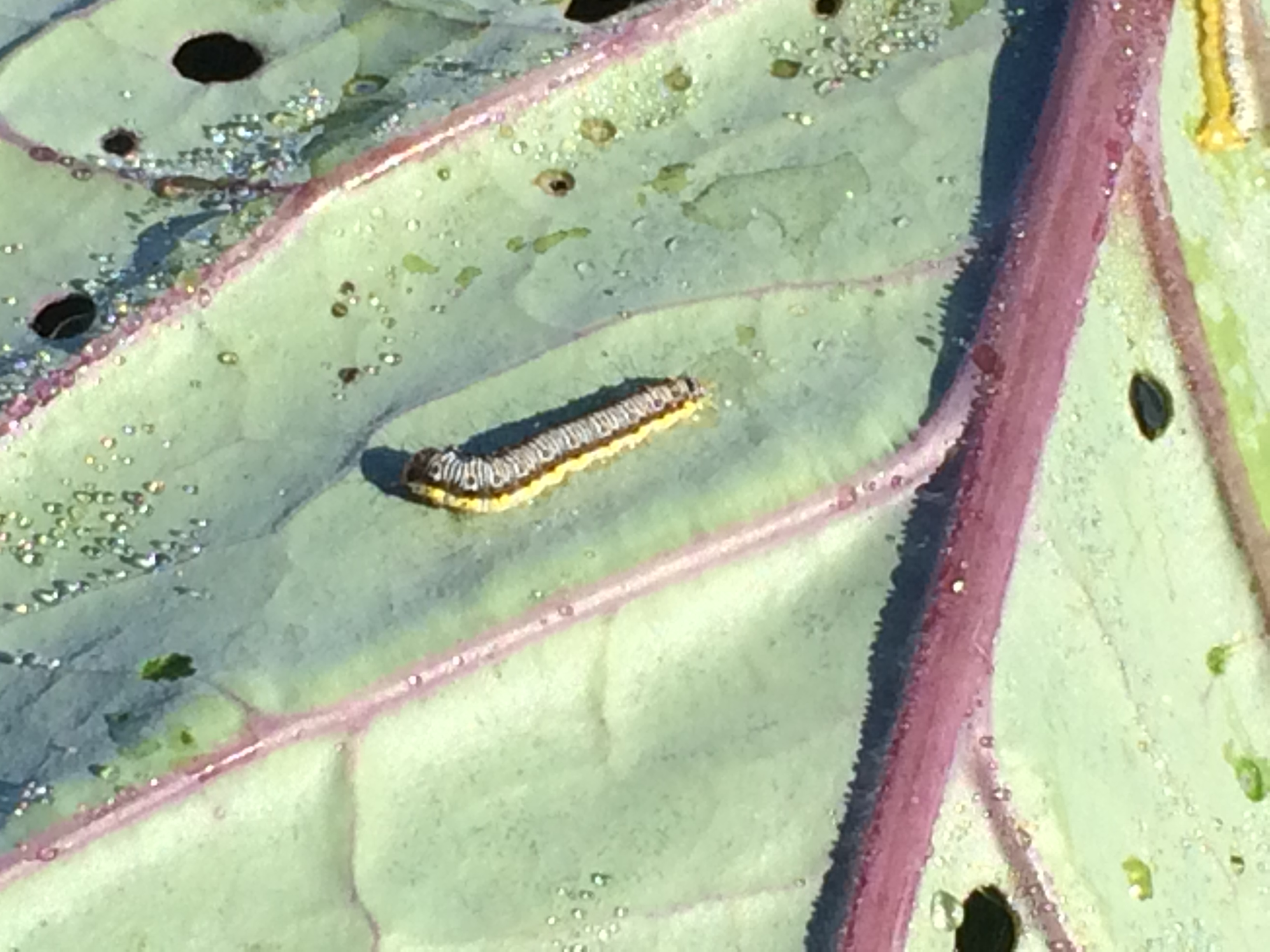
by Blake Thaxton | Oct 21, 2014
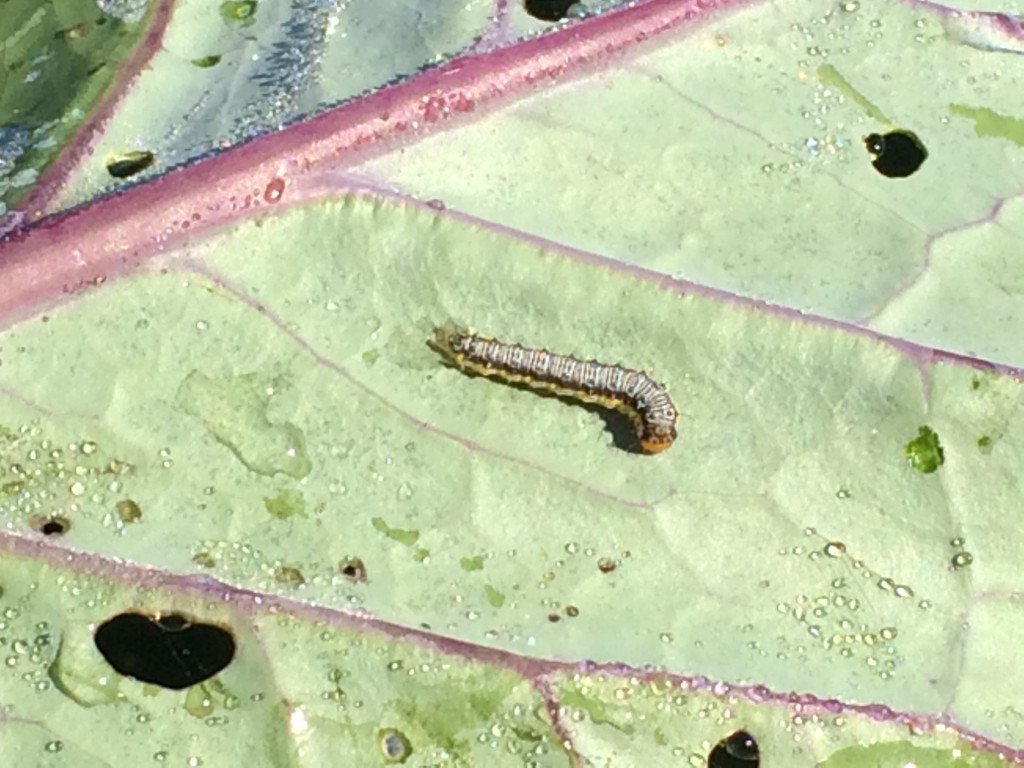
Cross-Striped Cabbageworm – Photo credits: Blake Thaxton
Panhandle gardeners have their fall gardens planted and our growing rapidly. What the gardeners may start noticing is shotgun damage to cabbage leaves in their garden. The suspect for this damage is the Cross-Striped Cabbageworm.
The Cross-Striped Cabbageworm have black and white markings on the back of the caterpillar and a bright yellow stripe on each side. This particular caterpillar feeds in cluster and maybe limited to a hot spot of a few plants in the garden or production area. They feed on tender parts of the cabbage including the terminal bud and can feed into the head once heading is initiated.
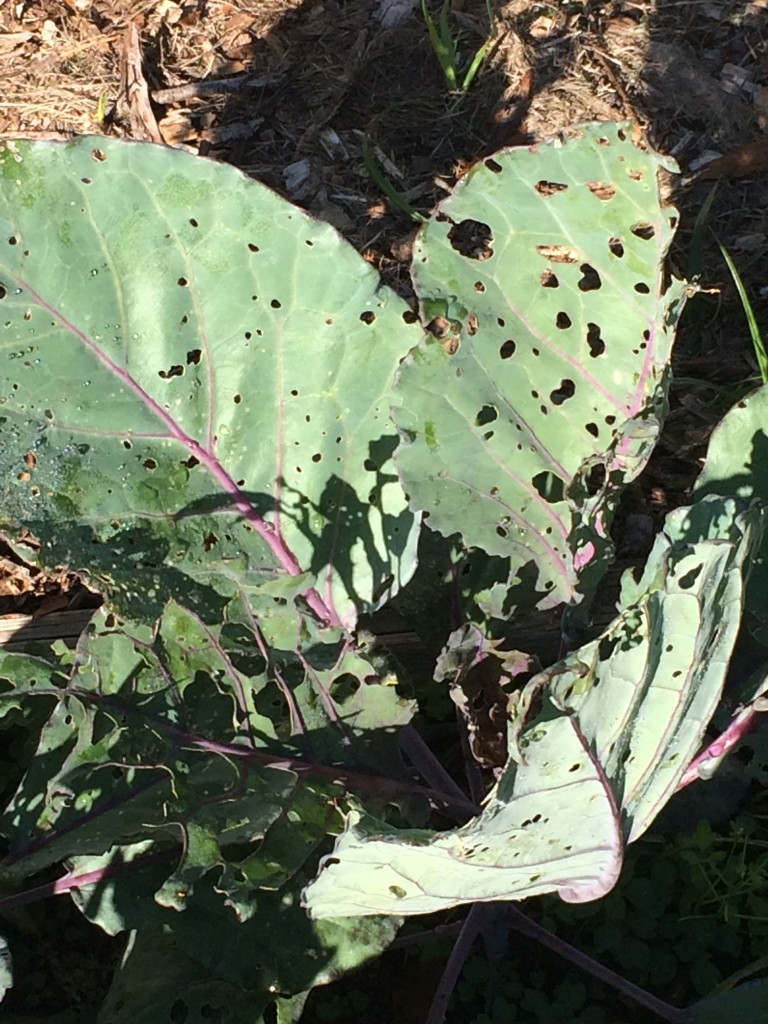
Damage caused by Cross-Striped Cabbageworm – Photo Credit: Blake Thaxton
With all pest control the three levels of control should be used:
- Level 1: Systems-based practices – weed control of pest host weeds
- Level 2: Mechanical and physical practices – A barrier, such as a light cloth that still allows enough light, can be used when the plants our young to prevent the moths from laying eggs on the cabbage.
- Level 3: Soft chemical & other materials – Bt (Bacillus thuringiensis) products can be used on the small-sized caterpillars. Harsher chemicals can kill the adults but in a garden situation picking them off and disposing them in a bucket of soapy water will do the trick as well.
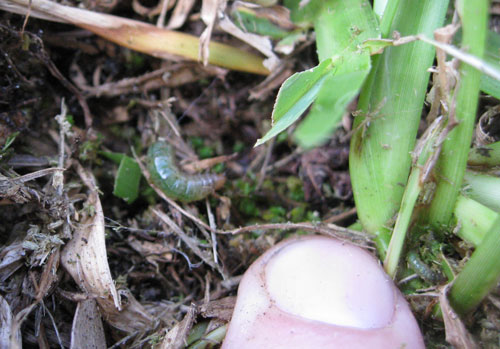
by Taylor Vandiver | Sep 9, 2014
What’s eating my lawn? Does your grass look ragged in areas, as if someone randomly used a weed-eater here and there? Are you noticing brown patches that have a closely clipped appearance compared to other areas of your lawn? Your turf may be playing host to Tropical Sod Webworm.
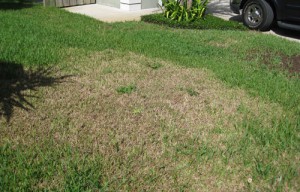
Sod webworm damage in a home lawn. Photo courtesy UF/IFAS.
Sod webworm damage is subtle at first. You have to look closely to notice larval feeding damage. However, an easy indication of their presence is the light tan/brown colored moths, which are the adult stage of the pest. You may see them fly up as you walk through your lawn or if you disturb a nearby bush. The moths do not cause any damage to the turf, but they are depositing eggs, which will result in their offspring, the caterpillars, who do all the chewing damage.
The larvae are gray-green and have spots on each segment. The mature larvae can be up to 1 inch in length. Larvae will curl up in the soil during the day and feed at night. So if you happen to notice caterpillars feeding during the day, it’s probably not sod webworm. You will notice chewed notches along the leaf blade, holes in the leaf and even leaf blade skeletonizing. The older the larvae are, the more they will eat. Damage may start out as a ragged appearance in your turf, which can be hard to diagnose. However, if left unchecked, sod webworm can cause considerable injury to your lawn.
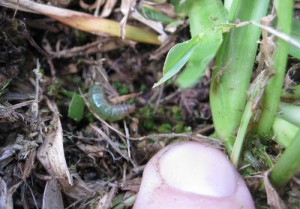
Sod webworm larvae. Photo courtesy UF/IFAS.
If you are uncertain of their presence you can always use a soap drench to flush out larvae. Mix 2 tablespoons of dish soap with 2 gallons of water and pour it over a damaged area (about 3 square ft.). The soap mixture will irritate the pest and bring them to the surface so you can easily identify them. If nothing appears in the area tested move to another damaged site and try again. Here is a link to a video that will give more information on identifying Tropical Sod Webworm.
Tropical Sod Webworm is considered a pest of all warm-season turfgrasses. However, St. Augustinegrass is most commonly affected. The best way to prevent a pest infestation is to use proper cultural maintenance practices for your lawn type. However, if the pest does appear, chemical control should be targeting the larvae stage of the pest. There are multiple products marketed to control lawn caterpillars. However, you may want to consider using B.t. (Bacillus thurengiensis), which is a bacterium that will only harm caterpillars and not bother beneficial insects that may be in your lawn. For more information you can contact your local extension office.
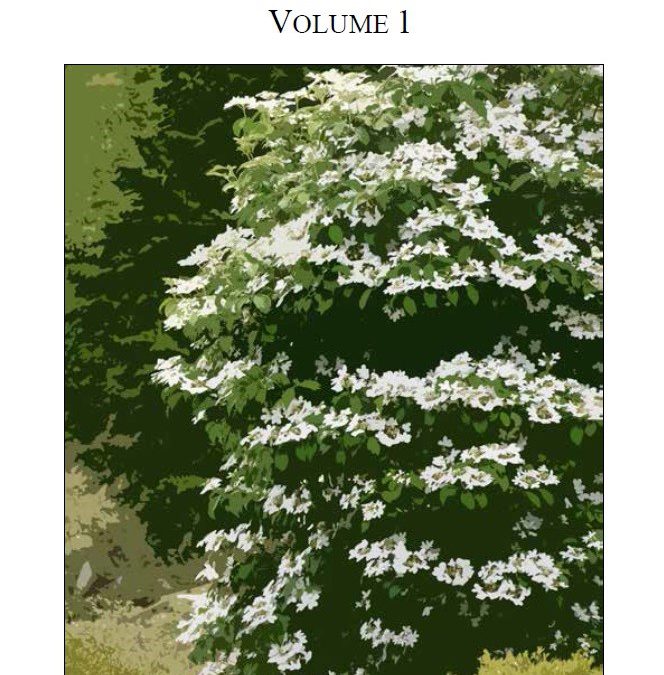
by Gary Knox | Aug 19, 2014
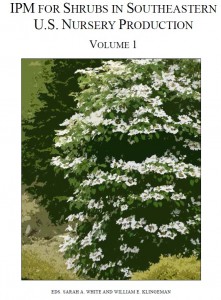 A new IPM guide is making it easier to grow five common southeastern shrubs. Growing five southeastern shrubs is now easier thanks to a free, new IPM resource from the Southern Nursery IPM Working Group.
A new IPM guide is making it easier to grow five common southeastern shrubs. Growing five southeastern shrubs is now easier thanks to a free, new IPM resource from the Southern Nursery IPM Working Group.
IPM for Shrubs in Southeastern U.S. Nursery Production is a compilation of Integrated Pest Management (IPM) information for five major shrubs in nursery crop production in the southeast. This 175 page book covers sustainable management for insects, mites, diseases, and weeds for these shrubs, as well as nursery production information. This IPM resource was developed for nursery growers although professional landscape managers and collectors of these plants also will find the information valuable.
Individual chapters cover abelia (Abelia spp.), camellia (Camellia spp.), shrub rose (Rosa spp.), blueberry (Vaccinium spp.) and viburnum (Viburnum spp.). Each chapter provides comprehensive information on the species, primary cultivars and their nursery production. Major pests, diseases, weeds and abiotic disorders are presented for each genus along with sustainable management methods and tables listing labeled pesticides and fungicides by mode of action and site. An additional chapter discusses weed management in shrub production. Future volumes covering additional shrubs are anticipated.
Edited by Clemson University’s Sarah A. White and University of Tennessee’s William E. Klingeman, this free guide was developed by the Southern Nursery IPM Working Group, including University of Florida NFREC’s Gary Knox and Mathews Paret. The award-winning, multi-disciplinary group is composed of experts from universities across the southeast. This group formed in 2008 to develop and deliver educational programming to the southern U.S. nursery industry and Extension personnel. The team recently won the 2014 Bright Idea Award from the Friends of Southern IPM and Southern IPM Center.
This resource joins the tree IPM book previously released by this group, IPM for Select Deciduous Trees in Southeastern US Nursery Production. The tree IPM book is similar to the new resource in that it contains IPM information for insects, mites, diseases, and weeds of nine major tree crops as well as production information. Individual chapters cover birch (Betula spp.), cherry (Prunus spp.), crapemyrtle (Lagerstroemia spp.), dogwood (Cornus spp.), chinese elm (Ulmus parvifolia), magnolia (Magnolia spp.), maple (Acer spp.), oak (Quercus spp.) and redbud (Cercis spp.).
Both books can be downloaded free through iTunes (http://www.apple.com/itunes/) or each chapter is available as a free pdf through the Southern Nursery IPM Working Group website, http://wiki.bugwood.org/SNIPM. A limited number of hardcopy books were printed and distributed to authors. Thanks to the Southern Region IPM Center for their generous support to make this resource possible!


![]() As spring commences and young wildlife of all species are born, everyone’s favorite flying, furry mammal begins roosting season. Ideally, bats will find homes in trees, caves, abandoned buildings, and bat houses, but sometimes they end up in a home. I receive calls often about how to best remove or exclude a group of bats living in an attic or garage. While there are countless benefits (most notably, efficient insect control) to having bats in one’s landscape or neighborhood, most people prefer they not share their own home with them.
As spring commences and young wildlife of all species are born, everyone’s favorite flying, furry mammal begins roosting season. Ideally, bats will find homes in trees, caves, abandoned buildings, and bat houses, but sometimes they end up in a home. I receive calls often about how to best remove or exclude a group of bats living in an attic or garage. While there are countless benefits (most notably, efficient insect control) to having bats in one’s landscape or neighborhood, most people prefer they not share their own home with them.









